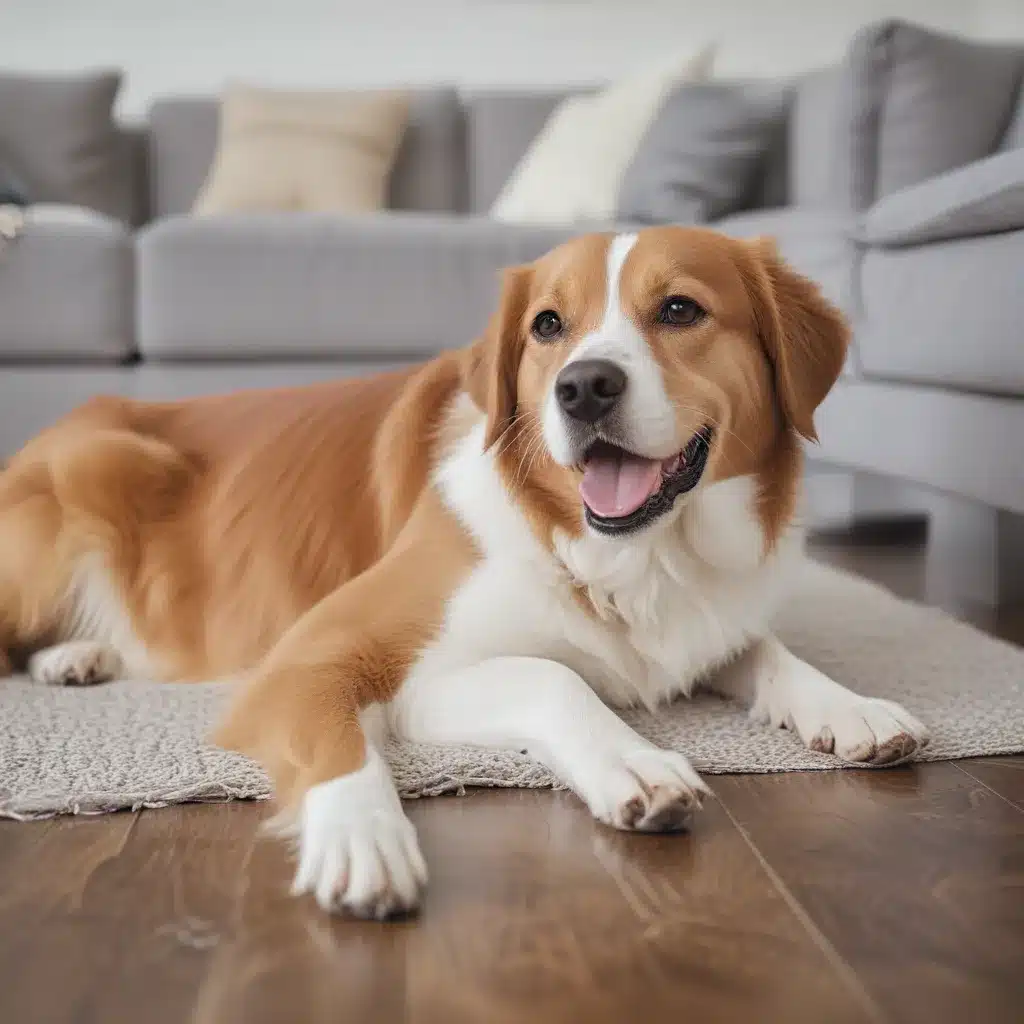Tail Wagging Hazards: Potential Dangers for Pets at Home
Have you ever noticed your pup’s tail wagging wildly, only to find they’ve knocked over your favorite vase or sent your carefully placed throw pillows flying? Well, my friends, that joyful tail wagging can be a double-edged sword when it comes to pet safety in the home. As a lifelong dog lover and applied animal behaviorist, I’m here to shed some light on the potential dangers of those enthusiastic tail wags.
The Deceptive Tail Wag
Let’s start by addressing a common misconception: that a wagging tail automatically means a happy, friendly dog. Oh, if only it were that simple! Just like a human’s fake smile, a dog’s tail wag isn’t always a reliable indicator of their emotional state. In fact, I’ve seen many a well-meaning person approach a dog with a stiffly wagging tail, only to end up on the receiving end of a nip or a growl.
You see, there are different types of tail wags, and they can convey vastly different meanings. The classic full-body wag, where the dog’s whole backside is swinging back and forth, is often a sign of true happiness and excitement. But a tense, rigid wag that’s limited to just the tail itself? That’s usually a red flag that the dog is feeling anxious, defensive, or even aggressive.
As I’ve written before, there’s even such a thing as a “circle wag,” where the dog’s tail moves in a complete circular motion. This, I believe, is an expression of unabashed joy – the canine equivalent of a giddy human spinning in circles. But don’t let that fool you; even the happiest of circle wags can conceal potential dangers.
Wagging Wrecking Balls
Picture this: you’re relaxing on the couch, minding your own business, when suddenly a furry missile comes barreling into the room. It’s your beloved pup, tail spinning like a helicopter blade, intent on showering you with affection. But instead of cuddles, you find yourself dodging a barrage of household objects sent flying by that powerful wag.
I’ve seen it happen time and time again – that irrepressible tail knocking over lamps, sweeping coffee tables clear, and sending picture frames crashing to the floor. And it’s not just inanimate objects at risk. Those thick, muscular tails can also be a hazard to delicate human skin, leaving painful welts and bruises in their wake.
Just imagine what would happen if your pup’s tail-wagging frenzy were to collide with the fragile items on your home’s window treatments. Shredded curtains, broken blinds, and a very startled dog – not exactly the picture of domestic bliss.
A Wagging Weapon?
But the dangers of that wagging appendage don’t stop there. Oh no, my friends, that tail can become a veritable weapon in the wrong circumstances. I’ll never forget the time I visited a client whose once-gentle Doberman had taken to using its tail as a club, whipping it back and forth to ward off perceived threats.
Now, I know what you’re thinking: “A Doberman, using its tail as a weapon? That’s just crazy!” But the truth is, any dog, regardless of breed, can potentially transform their tail into a dangerous liability if they feel scared, anxious, or aggressive. And when that happens, it’s not just your belongings at risk – it’s the safety of your family, your guests, and even the dog themselves.
Taming the Tail
So, what’s a pet parent to do? Well, the first step is to understand your dog’s body language and be able to recognize the subtle signs of stress or discomfort. Docking a Doberman’s tail may reduce the potential for injury, but that’s not a one-size-fits-all solution. The real key is being a vigilant, observant, and proactive pet owner.
When you see that tail start to pick up speed, take a step back and assess the situation. Is your pup truly happy and relaxed, or are they feeling anxious or overstimulated? If it’s the latter, it’s time to intervene – gently redirect their attention, remove them from the situation, or simply give them a calm, quiet space to settle down.
And don’t forget to childproof your home with your furry friends in mind. Rearrange furniture, secure fragile items, and create safe zones where your pup can indulge their tail-wagging antics without causing mayhem. With a little foresight and some creative problem-solving, you can turn those tail-wagging hazards into tail-wagging happiness.
So, the next time your pup’s tail starts spinning like a propeller, take a moment to appreciate their exuberance. But also keep a watchful eye, because in the world of dogs, that wagging wonder can be a double-edged sword. With a little understanding and some preventative measures, though, you can keep your home – and your beloved pup – safe and sound.



